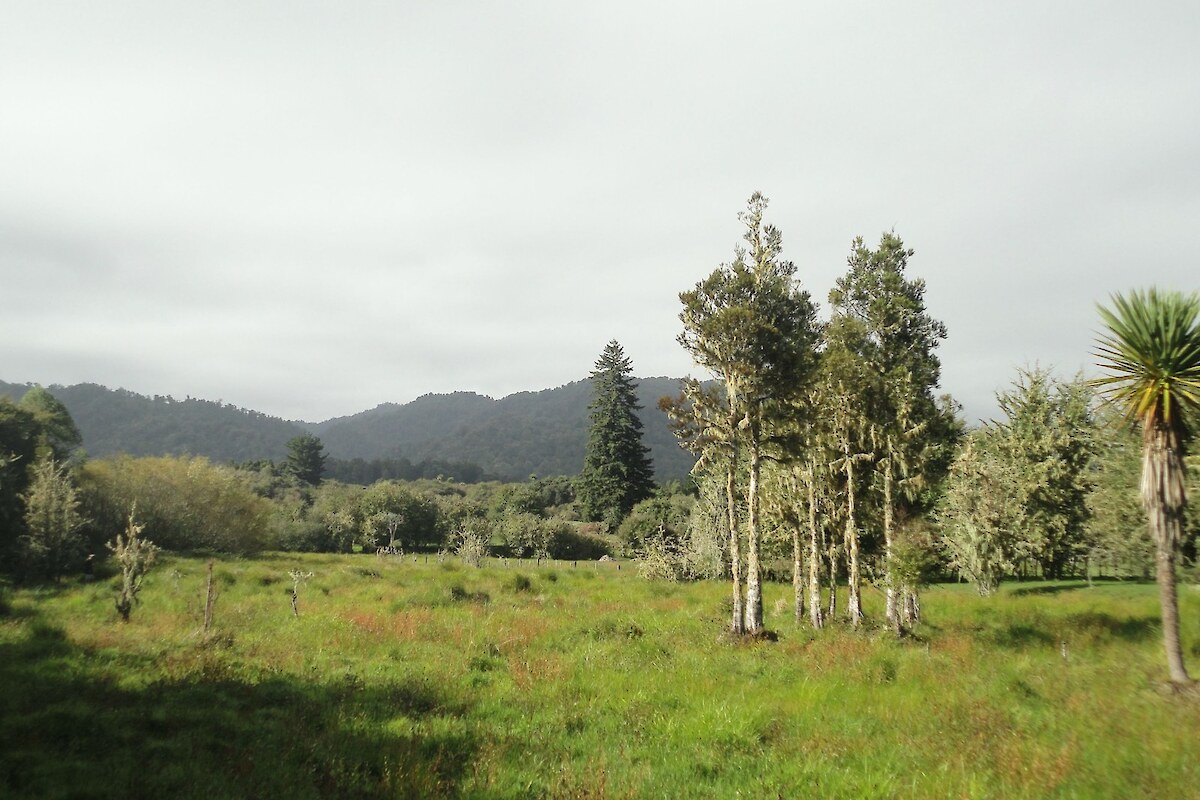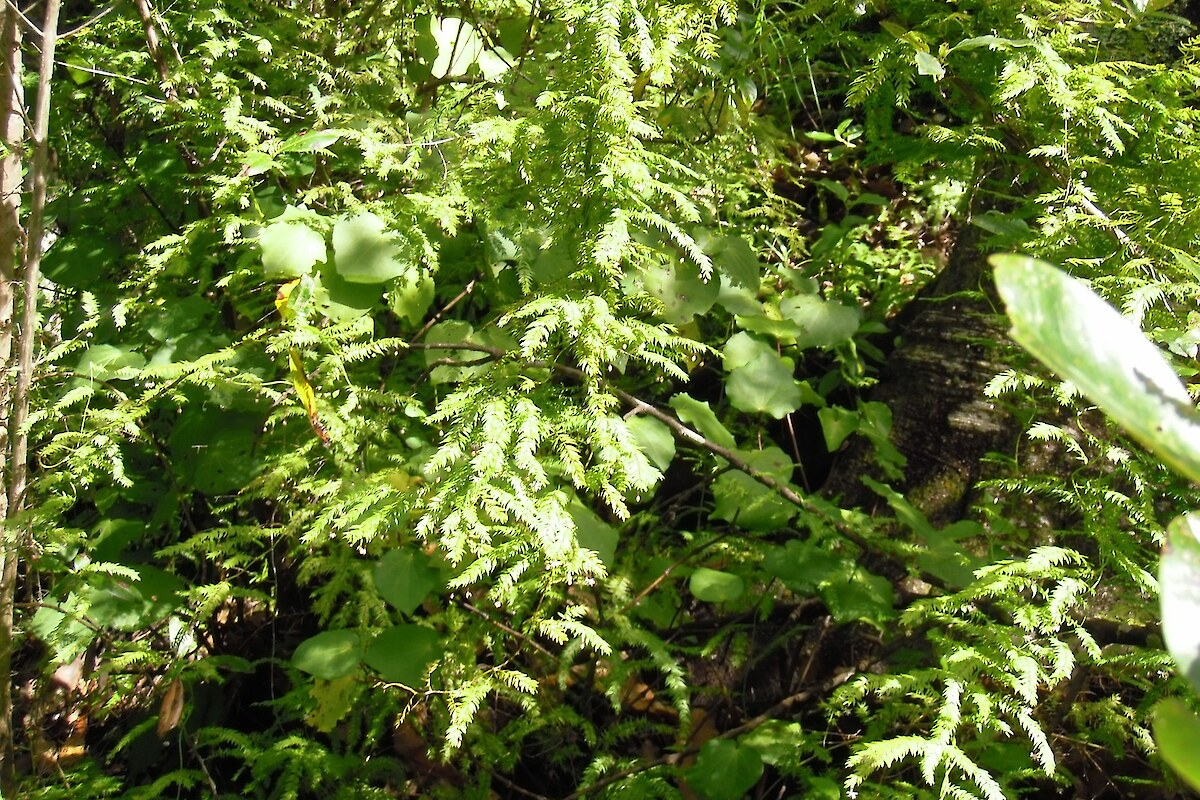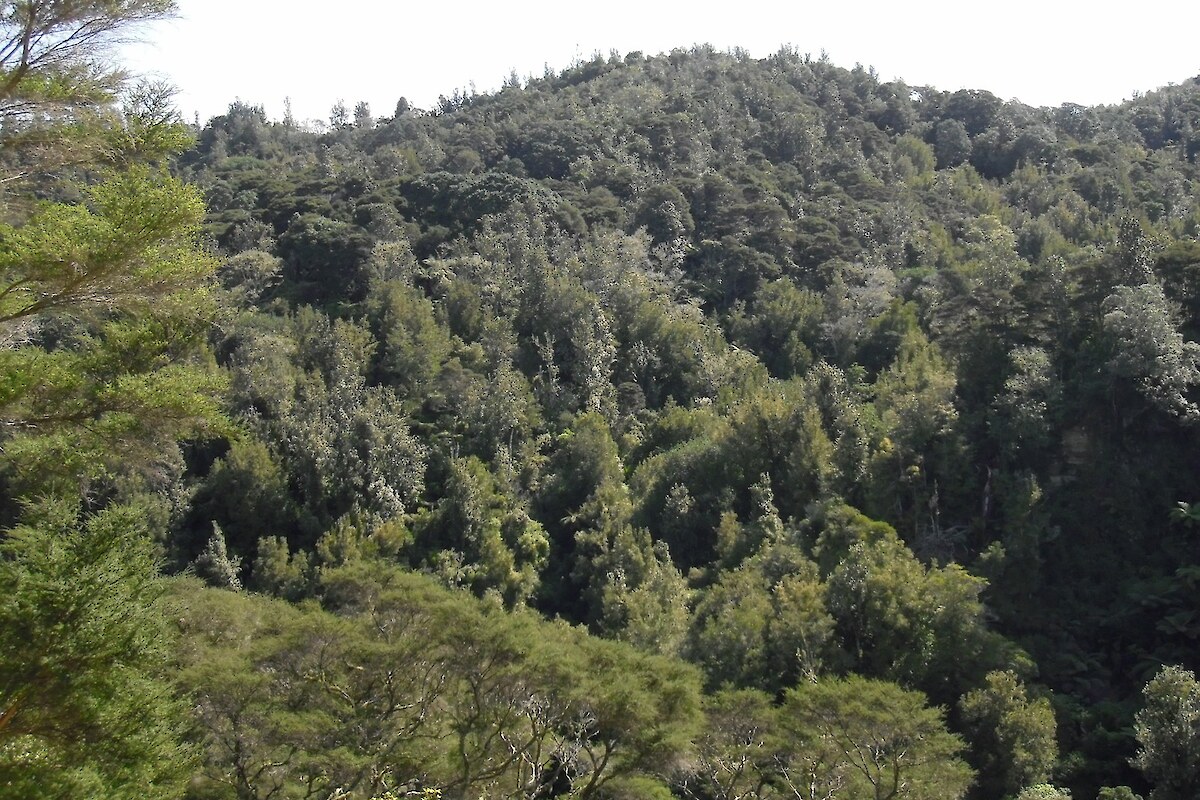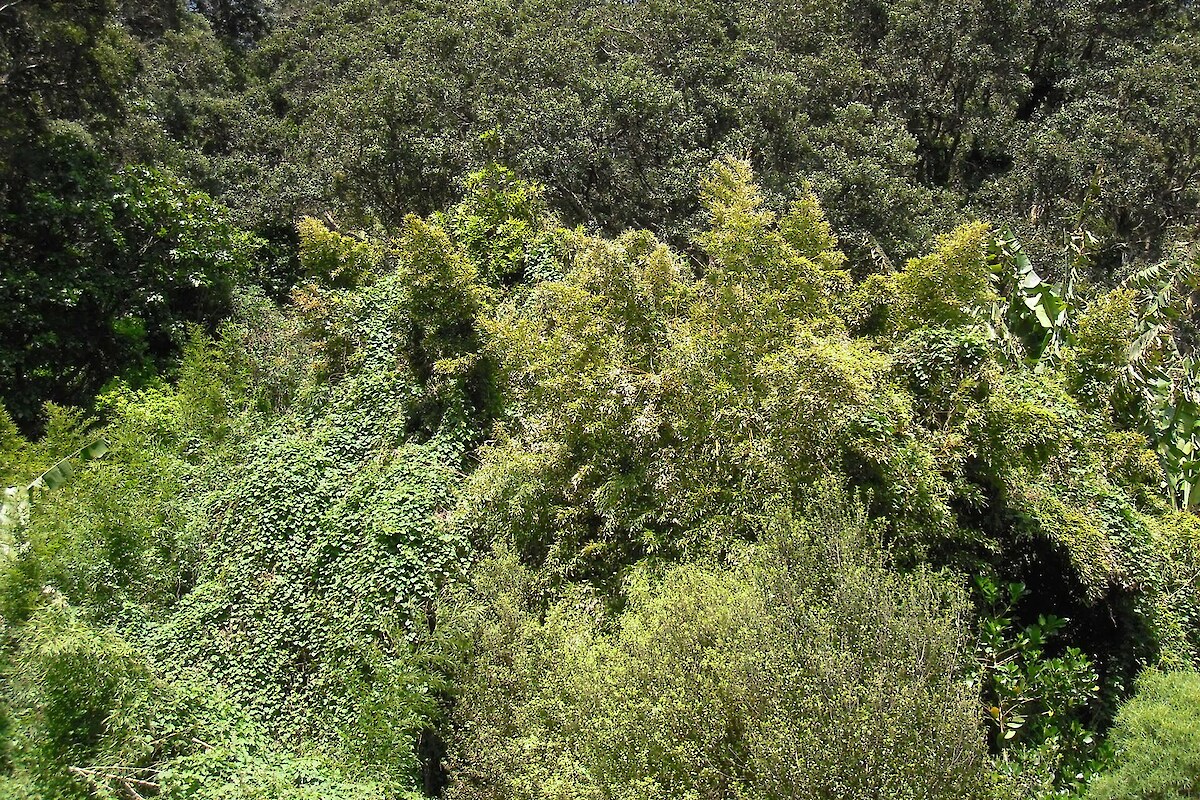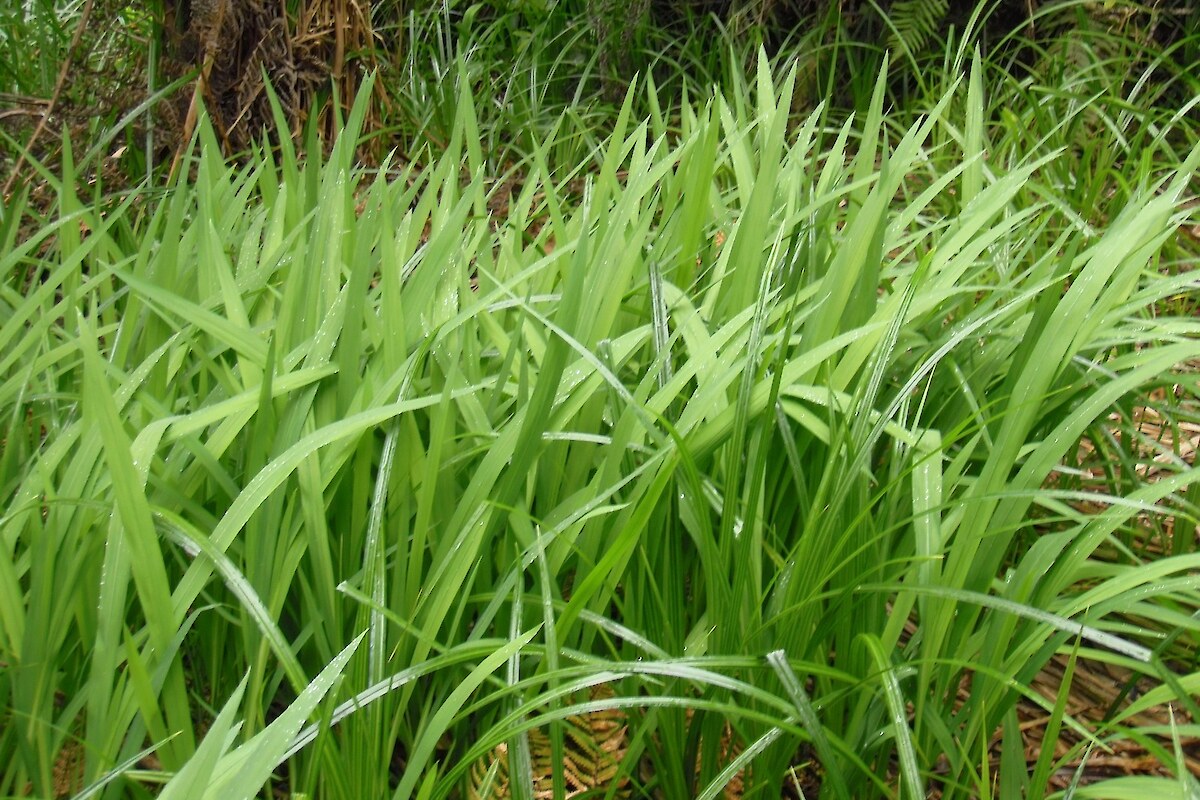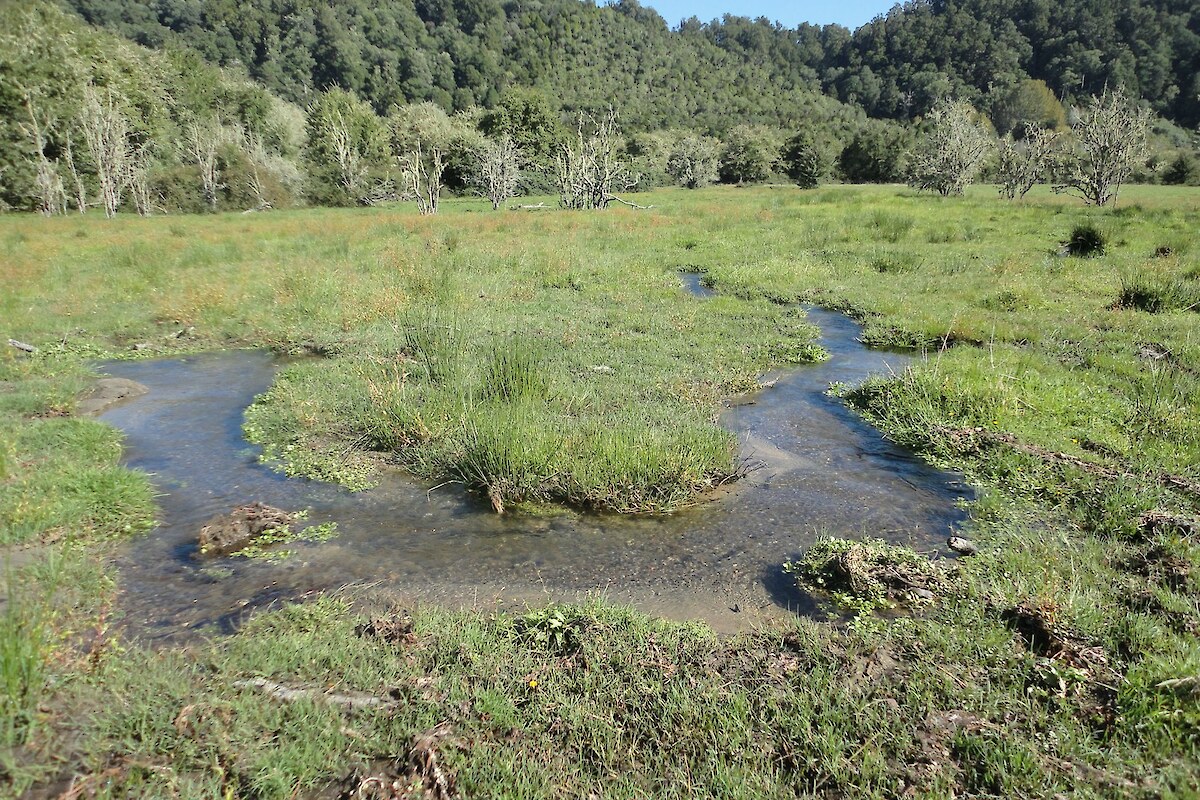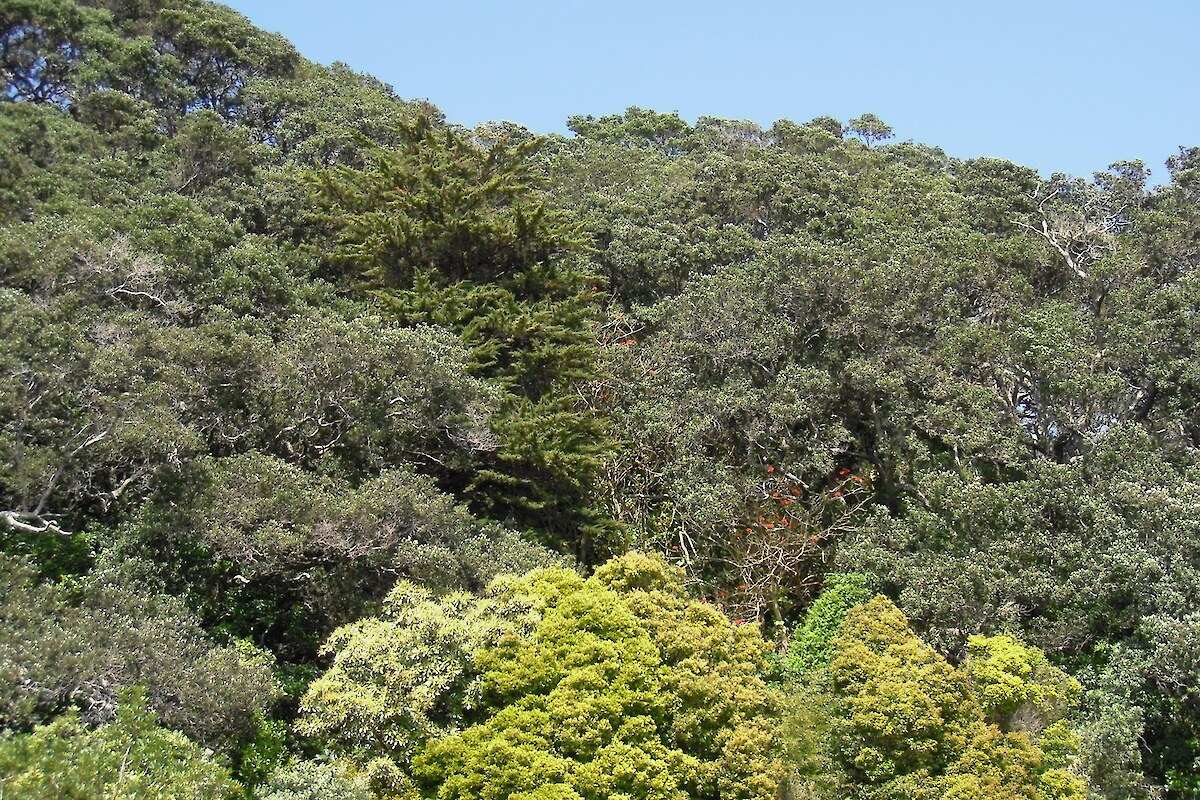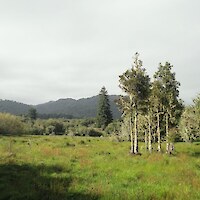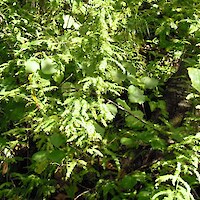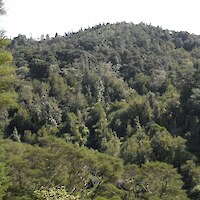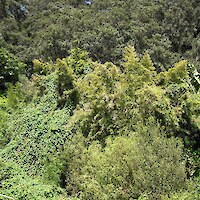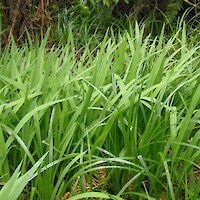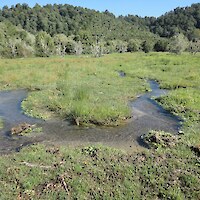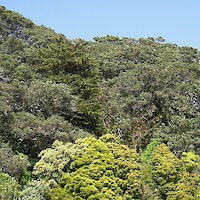Ohope Scenic Reserve (c.490 ha) in the Eastern Bay of Plenty is administered by the Department of Conservation, and jointly managed with Ngati Awa under the joint management committee, Te Tapatoru á Toi. The reserve comprises coastal cliffs and hill country that becomes steeper further inland. Pohutukawa (Metrosideros excelsa) forest dominates the coastal area with rewarewa (Knightia excelsa)-kanuka (Kunzea ericoides)-pohutukawa forest inland. It has exceptional botanical values, but its margins are threatened by weed incursion from neighbouring residential areas, farming and forestry.
In 1999, Wildland Consultants surveyed selected parts of the Ohope Scenic Reserve for environmental pest plants as part of a larger survey of 28 Department of Conservation-managed sites in the Whakatane area. In 2010, the Department of Conservation requested that the boundaries and walking tracks of Ohope Scenic Reserve be resurveyed, with the objectives of identifying, marking and mapping the distribution of weed species.
A ground-based weed survey was undertaken by walking the perimeter of the project area and along tracks. All locations of weed species were identified, recorded and marked by GPS. Weed distributions and densities were mapped onto aerial photographs at a scale of 1:3,000.
Weed infestations occurred around all reserve boundaries, along the public walking tracks, and along Maraetotara Stream. Weed infestation occurrences were generally larger and more diverse near residential properties, and some of the largest infestations occurred in the small disjunct parts of the reserve between OhopeBeach and Ohope Road. Weed species most common around boundaries elsewhere were ginger (Hedychium gardnerianum), pampas (Cortaderia selloana), barberry (Berberis glaucocarpa), and cotoneaster (Cotoneaster glaucophyllus).
The number of pest plant species recorded in the reserve increased from 56 in 1999 to 65 in 2010, although 22 species recorded in 2010 were not recorded in 1999, and 19 pest plant species recorded in 1999 were not found in 2010. The cover and distribrution of all pest plant species between 1999 and 2010 is compared and described.


